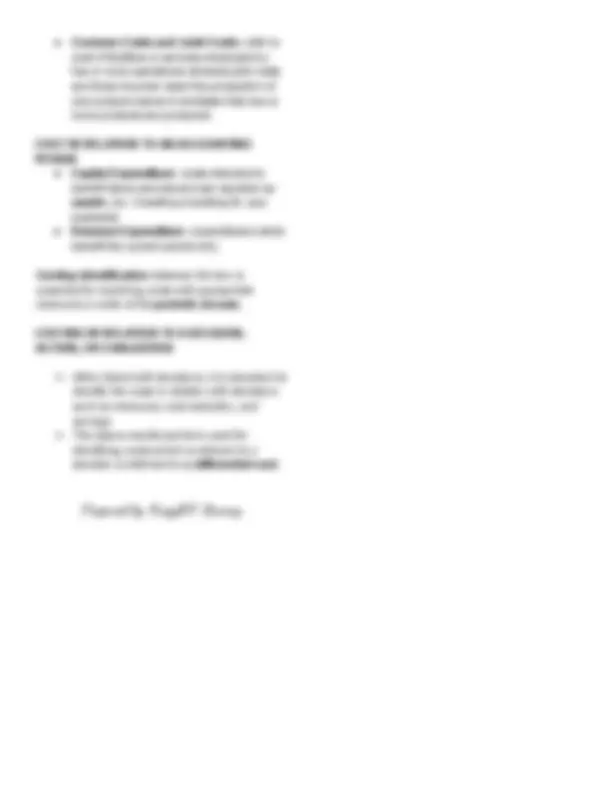



Study with the several resources on Docsity

Earn points by helping other students or get them with a premium plan


Prepare for your exams
Study with the several resources on Docsity

Earn points to download
Earn points by helping other students or get them with a premium plan
Community
Ask the community for help and clear up your study doubts
Discover the best universities in your country according to Docsity users
Free resources
Download our free guides on studying techniques, anxiety management strategies, and thesis advice from Docsity tutors
These are overview about the concepts of costs.
Typology: Lecture notes
1 / 2

This page cannot be seen from the preview
Don't miss anything!


➢ Before, cost accounting only applied to manufacturing. But nowadays, it depends on the style and type of an organization’s cost concepts. ➢ Main concept: expense is a cost but not every cost is an expense. Cost Objects- any item or activity for which costs are accumulated and measured. ➢ The fundamental question about cost that is answered by this is ‘the cost of what’. Example of cost object: ● Product ● Batch of like units ● Customer order ● Contract ● Product line ● Process ● Department ● Division ● Project ● Strategic goal TRACEABILITY COSTS TO COSTS OBJECTS ● Direct Cost - refers to costs that can be directly attributed to a specific product. ● Indirect Cost- no fixed quantities. Traceability varies depending on the degree and the product guided by these 2 principles. CLASSIFICATION OF COSTS ● Product ● Volume of Production ● Manufacturing Departments,Processes, Cost Centers, or Other Subdivisions ● Accounting Period ● A Decision, Action, or Evaluation COST IN RELATION TO THE PROJECT ● Manufacturing Costs (Production Costs)
● Common Costs and Joint Costs- refer to cost of facilities or services employed by two or more operations whereas joint costs are those incurred when the production of one product makes it inevitable that one or more products are produced. COST IN RELATION TO AN ACCOUNTING PERIOD ● Capital Expenditure- costs intended to benefit future periods and are reported as assets. (ex. Investing a building for your business) ● Revenue Expenditure- expenditures which benefit the current period only. Costing identification between the two is essential for matching costs with appropriate revenues in order at the periodic income. COSTING IN RELATION TO A DECISION, ACTION, OR EVALUATION ➢ When faced with decisions, it is important to identify the costs in relation with decisions such as revenues, cost reduction, and savings. ➢ The above-mentioned term used for identifying costs which is relevant to a decision is referred to as differential cost.